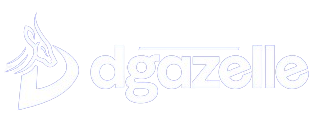Since the internet has become so prevalent in our lives, your company needs to adapt as well. Digital marketing can help with brand building, product or service promotion, and business promotion.
You have a reputation to establish and a viewership to reach on the internet. But like anything else, there are right and bad ways to use digital marketing. Make sure you are doing things correctly by looking over these typical digital marketing mistakes.
1. Absence of a Blog
Recall that your goal is to position oneself as a reliable industry leader in addition to trying to promote your website as a business. Putting out insightful, useful, and easily readable blog posts will make you a reliable voice. Furthermore, every blog post you write adds to your site’s index, and the more indexed pages you have, the higher your site will appear in Google search results.
It’s crucial that the blog be participatory in addition to being created. To get answers, post questions in the comment box. Include guest pieces or interviews with scholars or accomplished experts in your sector as well. Make the most compelling post possible every time by using this blog post writing guide.
2. Avoiding social media
It’s possible that you believe you can avoid using social media. I regret to inform you that you are mistaken! It’s a vital strategy for converting leads into paying clients. You may advertise your business online by disseminating your content, connecting with consumers, and reaching your audience. Understand why you require a social media manager before attempting to handle everything yourself.
3. Ignoring Mobile Users
Worldwide, mobile browsing makes for over 50% of all web traffic. In order to ensure that the load time on mobile devices is just as quick as it is on desktops, remember to optimize your website for mobile visitors as well. Make sure your website’s design has been modified for mobile viewing as well.
4. Not Offering Sales and Discounts
According to a Retail Me Not poll, 2/3 of consumers made an impulsive buy just because there was a discount. Limited-time deals or online coupons make excellent pop-ups for your website, particularly when they appear on the landing page or when a visitor would quit their shopping. There should be a call-to-action on your website that is rewardable with a promotion.
5. Not Making Enough Use of Keyword Research
You must prioritize SEO if you want potential clients to be able to locate you online. Determine which keywords are most popular, highly relevant, and somewhat straightforward to rank for. Next, keep an eye on your ranking for every term, the quantity of traffic each keyword generates, and whether the visitors are coming from that keyword are turning into leads.
6. Aiming for a Wide Audience
It is not an economical use of your funds to use your marketing budget to reach as many individuals as possible. Select a target market that is well-defined and will provide more pertinent leads.
Never assume anything about any audience or base your decisions on educated guesses. To identify your target audience and the most effective approach to contact them, conduct research.
7. Having a Badly Designed Website
A call to action and a landing page with optimal optimization are essential components of every website built with digital marketing in mind. Discounts and promos must to be prominently displayed as well. It is crucial to have an engaging and educational website if you want to convert visitors into qualified leads.
8. Failing to Monitor Your Leads
Numerous traffic sources, including social media, email blasts, referring links, and keywords, can produce online leads. While one of those sources may regularly produce clients, the other may only occasionally produce leads. It’s critical to understand this so that you may modify your approach appropriately.
9. Disregarding other Competitors
There’s a good chance that someone else is providing the same service as you. Instead of acting as though they don’t exist, figure out how to make an impression. Determine your brand’s unique selling point and emphasize it on your website. Your website should make it very evident what sets you apart from the competitors.
10. Not Making Use of Social Proof
Seeing instances of contented consumers inspires greater conversions. Case studies, success stories, and testimonials reassure visitors to your website that other customers are satisfied with your company. They have peace of mind knowing that they will be.
GET IN TOUCH
Boost your brand’s digital presence with Dgazelle! As your dedicated growth partners, we craft personalized digital marketing strategies that resonate with your audience, elevate engagement, and deliver tangible results. Let’s get started today!






